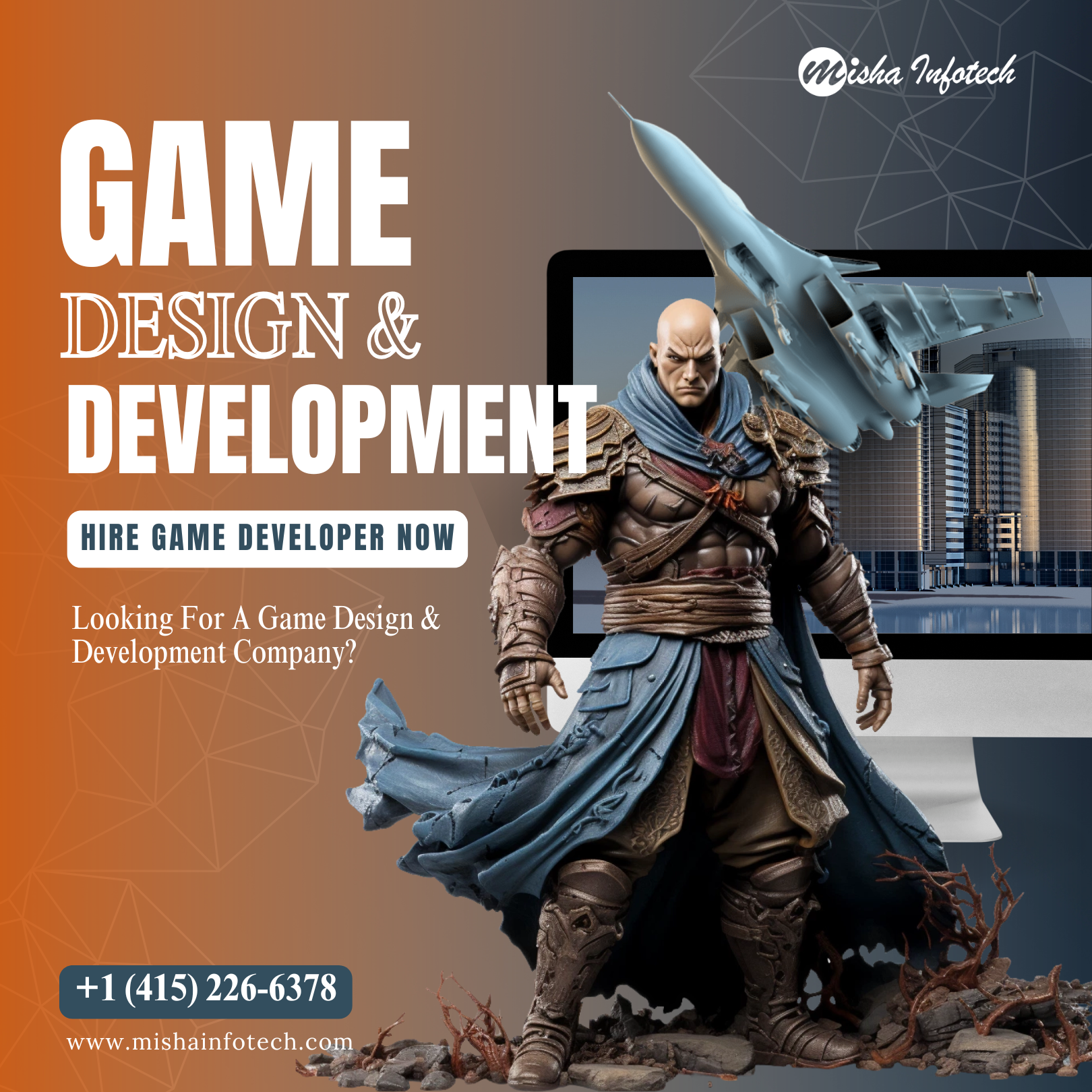When it comes to User Interface/User Experience (UI/UX) design, creating an engaging and memorable experience is paramount. That’s where gamification comes in. By incorporating game elements into design, such as challenges, rewards, and competition, UI/UX designers are able to enhance user engagement and drive desired behaviors.
In this article, we will explore the power of gamification in UI/UX design and how it can level up the overall user experience. From increasing user motivation and satisfaction to fostering a sense of accomplishment, gamification has the ability to transform a mundane task into an exciting and enjoyable journey. But it’s not just about making things fun – gamification also has tangible benefits for businesses, including increased user loyalty, improved retention rates, and higher conversion rates.
We will delve into the various ways gamification can be applied in UI/UX design and provide real-life examples of its successful implementation. So whether you’re a UI/UX designer looking to enhance your design skills or a business owner seeking to create a more engaging digital experience, this article will show you the power of gamification in creating memorable, user-friendly interfaces.
Understanding user experience (UX) design
User experience (UX) design is the process of creating products or services that provide meaningful and relevant experiences to users. It involves understanding the user’s needs, behaviors, and pain points, and designing an interface that caters to their preferences and goals. UX design is not just about creating a visually appealing interface, but rather, it’s about crafting an experience that is intuitive, efficient, and enjoyable for the user.
At the heart of UX design is the user. Designers must put themselves in the user’s shoes and empathize with their needs and challenges. This requires extensive research, user testing, and iterative design. By understanding the user’s journey, designers can create an interface that anticipates their actions, provides the necessary information and tools, and ultimately, delivers a satisfying experience.
Effective UX design is not only about aesthetics, but also about functionality, usability, and accessibility. It’s about creating a seamless and cohesive experience across all touchpoints, from the initial interaction to the final outcome. This holistic approach to design ensures that users can accomplish their tasks with ease, efficiency, and satisfaction, ultimately leading to increased engagement, loyalty, and success for the product or service.
Elements of a successful user interface (UI)
A successful user interface (UI) is the foundation of a great user experience. It’s the visual representation of the product or service, and it’s the primary means through which users interact with it. A well-designed UI should be intuitive, visually appealing, and responsive to the user’s needs.
One of the key elements of a successful UI is the layout and information architecture. The interface should be organized in a way that makes it easy for users to navigate and find the information they need. This may involve the use of clear hierarchies, intuitive navigation menus, and strategic placement of content and controls.
Another important element of a successful UI is the visual design. This includes the use of color, typography, iconography, and other design elements to create a cohesive and visually appealing interface. The visual design should not only be aesthetically pleasing but also support the overall user experience by guiding the user’s attention and facilitating the completion of tasks.
Interactivity is also a crucial element of a successful UI. Users should be able to easily interact with the interface, whether it’s through touch, mouse, or keyboard input. The interface should provide clear and responsive feedback to the user’s actions, ensuring a seamless and intuitive experience.
Finally, accessibility is a critical consideration in UI design. The interface should be designed to accommodate users with diverse abilities, including those with visual, auditory, or motor impairments. By ensuring that the UI is accessible, designers can create an inclusive experience that caters to a wider audience.
What is gamification and how it enhances UX
Gamification is the process of incorporating game-like elements and mechanics into non-game contexts, such as user interfaces and digital experiences. The goal of gamification is to enhance user engagement, motivation, and overall satisfaction by tapping into the innate human desire for challenge, competition, and achievement.
In the context of UI/UX design, gamification can take many forms, such as:
- Points, badges, and leaderboards: Rewarding users for completing tasks or reaching milestones with virtual rewards, creating a sense of accomplishment and competition.
- Levels and progression: Structuring the user experience as a series of challenges or levels, allowing users to progress and unlock new features or content.
- Challenges and quests: Presenting users with specific tasks or objectives to complete, fostering a sense of purpose and achievement.
- Feedback and rewards: Providing immediate and meaningful feedback on user actions, as well as tangible rewards for reaching goals or overcoming obstacles.
By incorporating these game-like elements into the user interface, designers can create a more engaging and immersive experience. Gamification taps into the user’s intrinsic motivations, such as the desire for autonomy, mastery, and a sense of belonging, which can lead to increased user satisfaction, loyalty, and ultimately, better business outcomes.
Moreover, gamification can enhance the overall user experience by making mundane or repetitive tasks more enjoyable and rewarding. For example, a financial planning app that gamifies the process of budgeting and saving can make the experience more engaging and motivating for users, leading to better financial habits and increased long-term engagement.
The psychology behind gamification and user engagement
The success of gamification in UI/UX design can be attributed to its ability to tap into the fundamental psychological needs and motivations of users. Gamification leverages well-established psychological principles to create an engaging and rewarding experience that keeps users coming back.
One of the key psychological principles underlying gamification is the concept of intrinsic motivation. Intrinsic motivation refers to the internal drive to engage in an activity for its own sake, rather than for external rewards or punishments. Gamification taps into this intrinsic motivation by providing users with a sense of autonomy, competence, and relatedness, which are essential for fostering intrinsic motivation.
For example, by allowing users to choose their own paths, set their own goals, and progress at their own pace (autonomy), gamification can create a sense of ownership and control over the user experience. Similarly, by providing users with clear and attainable challenges, as well as meaningful feedback on their progress (competence), gamification can foster a sense of mastery and achievement. Finally, by incorporating social elements, such as leaderboards or collaborative challenges (relatedness), gamification can create a sense of community and belonging, further enhancing user engagement and motivation.
Another psychological principle that underpins the effectiveness of gamification is the concept of flow. Flow is a state of deep engagement and immersion, where the user’s attention is fully absorbed in the task at hand, and they experience a sense of effortless control and enjoyment. Gamification can facilitate this flow state by carefully balancing the level of challenge with the user’s skills, providing clear goals and feedback, and minimizing distractions or interruptions.
By tapping into these psychological mechanisms, gamification can create a highly engaging and rewarding user experience, leading to increased user motivation, satisfaction, and loyalty. As users progress through the gamified experience, they are more likely to develop a positive emotional connection with the product or service, ultimately driving better business outcomes.
Examples of successful gamification in UI/UX design
Gamification has been successfully implemented in a wide range of industries and applications, demonstrating its versatility and effectiveness in enhancing user experience. Let’s explore some real-world examples of successful gamification in UI/UX design:
- Duolingo – Language Learning App:
Duolingo is a popular language learning app that has been lauded for its effective use of gamification. The app incorporates a variety of game-like elements, such as points, levels, leaderboards, and daily challenges, to make the language learning process more engaging and rewarding. Users earn points for completing lessons, and they can compete with friends or other users on the leaderboard, fostering a sense of friendly competition and motivation to keep learning.
- Nike+ Running App:
The Nike+ Running app is a fitness tracking app that uses gamification to encourage users to stay active and engaged. The app tracks the user’s running activities, awards them with virtual trophies and badges for reaching milestones, and allows them to compete with friends or other users on leaderboards. This gamified approach not only makes the fitness tracking experience more enjoyable but also helps users stay motivated and committed to their fitness goals.
- Habitica – Habit Tracking App:
Habitica is a unique habit-tracking app that transforms the process of building good habits into a role-playing game. Users create a customizable avatar and earn in-game rewards, such as experience points, gold, and items, for completing their daily tasks and habits. This gamified approach helps users stay motivated and engaged in their personal development journey, making it more enjoyable and rewarding.
- Starbucks Rewards Program:
Starbucks’ loyalty program is a prime example of gamification in a commercial setting. The program rewards customers with stars for every purchase, which can be redeemed for free drinks or food items. Users can also earn additional stars by completing challenges or engaging in specific behaviors, such as making a purchase on their birthday. This gamified approach not only encourages repeat business but also fosters a sense of exclusivity and status among loyal Starbucks customers.
These examples demonstrate how gamification can be effectively integrated into various user interfaces and digital experiences, leading to increased user engagement, motivation, and loyalty. By understanding the psychological principles behind gamification and carefully designing the user experience, UI/UX designers can create truly compelling and memorable interactions for their users.
Implementing gamification strategies in your UI/UX design process
Incorporating gamification into your UI/UX design process requires a strategic and thoughtful approach. Here are some key steps to consider when implementing gamification strategies:
- Understand your users:
Before you can begin designing a gamified experience, it’s essential to have a deep understanding of your target users. Conduct user research, create user personas, and identify their motivations, pain points, and desired outcomes. This information will help you tailor the gamification elements to your users’ specific needs and preferences.
- Define your goals and metrics:
Clearly define the objectives you want to achieve through gamification, such as increased user engagement, higher retention rates, or improved conversion rates. Establish key performance indicators (KPIs) that will help you measure the success of your gamified design. This will ensure that your gamification efforts are aligned with your overall business goals.
- Identify the right gamification elements:
Based on your user research and design goals, select the appropriate gamification elements to incorporate into your UI/UX design. This may include points, badges, leaderboards, challenges, progress tracking, and social features. Carefully consider how these elements will integrate with the overall user experience and support your desired outcomes.
- Design a cohesive and intuitive experience:
Ensure that the gamification elements are seamlessly integrated into the user interface, complementing the overall design and not feeling like an afterthought. The gamified experience should feel natural and intuitive, guiding users through the journey and providing clear feedback and rewards.
- Test and iterate:
Continuously test your gamified design with users, gather feedback, and iterate on the implementation. Monitor the performance metrics you’ve defined and make adjustments as needed to optimize the user experience and achieve your desired goals. Gamification is an ongoing process, and it’s essential to remain agile and responsive to user needs.
- Maintain engagement and motivation:
Sustaining user engagement and motivation is crucial for the long-term success of your gamified design. Regularly introduce new challenges, rewards, and updates to keep users engaged and prevent the gamification elements from becoming stale or predictable.
By following these steps and incorporating best practices in gamification, you can create a UI/UX design that not only delights users but also delivers tangible business benefits. Remember, the key to successful gamification is to strike a balance between fun and functionality, ensuring that the gamified experience seamlessly supports the overall user journey and your organizational objectives.
Challenges and considerations in gamifying user experience
While the benefits of gamification in UI/UX design are well-documented, there are also some challenges and considerations that designers must keep in mind when implementing these strategies. Let’s explore a few of them:
- Avoiding gimmicks:
One of the primary risks of gamification is the potential for it to come across as a gimmick or a superficial attempt to make the user experience more engaging. Designers must be careful to avoid implementing gamification elements solely for the sake of “gamifying” the interface, without a clear understanding of how they will enhance the overall user experience.
- Maintaining authenticity:
Gamification should feel like a natural and integral part of the user experience, not a forced or artificial addition. Designers must ensure that the gamified elements align with the brand’s identity, the user’s needs, and the overall design aesthetic, avoiding a disjointed or inauthentic experience.
- Balancing challenge and reward:
Striking the right balance between challenge and reward is crucial in gamification. If the challenges are too easy, users may quickly become bored; if they are too difficult, users may become frustrated and disengage. Designers must carefully design the progression of challenges and rewards to maintain an optimal level of engagement and motivation.
- Avoiding exploitation:
Gamification should not be used to exploit or manipulate users. Designers must be mindful of the psychological principles they are leveraging and ensure that the gamified experience is truly beneficial for the user, rather than serving solely to drive business objectives at the expense of user well-being.
- Ensuring accessibility:
Gamification elements must be designed with accessibility in mind, ensuring that all users, regardless of their abilities, can fully engage with and benefit from the gamified experience. This may involve considerations such as clear visual cues, intuitive controls, and accommodations for users with disabilities.
- Maintaining long-term engagement:
Sustaining user engagement and motivation over the long term is a significant challenge in gamification. Designers must continuously monitor user behavior, gather feedback, and iterate on the gamified experience to keep it fresh, relevant, and engaging for users.
- Addressing privacy and data concerns:
Gamification often involves the collection and use of user data, such as progress tracking, social interactions, and performance metrics. Designers must ensure that they are transparent about data collection and usage, and that they adhere to relevant privacy regulations and user expectations.
By being aware of these challenges and considerations, UI/UX designers can develop more thoughtful and responsible gamification strategies that truly enhance the user experience, while addressing potential pitfalls and ethical concerns.
Tools and technologies for implementing gamification in UI/UX design
As the demand for gamified user experiences continues to grow, a range of tools and technologies have emerged to support UI/UX designers in their gamification efforts. Let’s explore some of the key tools and technologies that can help you bring your gamified designs to life:
- Gamification Platforms:
There are several dedicated gamification platforms that provide a comprehensive suite of tools and features to help designers create and manage gamified experiences. Examples include SkillSmith, Bunchball, and Badgeville. These platforms often include features such as points systems, leaderboards, challenges, and analytics to track user engagement and performance.
- Game Engines:
Traditional game engines, such as Unity and Unreal Engine, can be leveraged to create highly interactive and visually engaging gamified user experiences. These engines offer a wide range of features, including physics simulations, animation tools, and scripting capabilities, allowing designers to build immersive and responsive gamified interfaces.
- Gamification SDKs and APIs:
Many technology companies offer software development kits (SDKs) and application programming interfaces (APIs) that enable designers to integrate gamification elements into their existing applications and platforms. Examples include the Gamification SDK from Salesforce, the Gamification API from Google Play Games Services, and the Gamification API from Mixpanel.
- Gamification Design Frameworks:
There are several established frameworks and methodologies that UI/UX designers can leverage when incorporating gamification into their design process. These include the Octalysis Framework, the Fogg Behavior Model, and the Mechanics, Dynamics, and Aesthetics (MDA) framework. These frameworks provide a structured approach to understanding user motivation and designing effective gamification strategies.
- Prototyping and Mockup Tools:
Tools like Figma, Adobe XD, and InVision allow designers to create high-fidelity prototypes and mockups of their gamified UI/UX designs, enabling them to test and validate their ideas with users before implementation. These tools often include features for incorporating interactive elements, animations, and user flows, which are crucial for effectively showcasing the gamified experience.
- Analytics and Tracking Tools:
Measuring the success and impact of your gamified design is essential. Tools like Google Analytics, Amplitude, and Mixpanel provide in-depth analytics and tracking capabilities, allowing designers to monitor user engagement, track progress, and identify areas for optimization.
By leveraging these tools and technologies, UI/UX designers can streamline the implementation of gamification, create more engaging and immersive user experiences, and gather valuable data to continuously improve and refine their gamified designs.
Conclusion: The future of gamification in UI/UX design
As the digital landscape continues to evolve, the importance of creating engaging and memorable user experiences has become paramount. Gamification has emerged as a powerful tool in the UI/UX designer’s arsenal, offering a unique and effective way to enhance user engagement, motivation, and satisfaction.
Through the strategic integration of game-like elements, such as challenges, rewards, and social features, UI/UX designers can transform mundane tasks into exciting and rewarding journeys for users. By tapping into the fundamental psychological needs and motivations of users, gamification has the ability to foster a sense of accomplishment, foster a sense of community, and ultimately, drive better business outcomes.
The future of gamification in UI/UX design is bright, as the demand for immersive and engaging digital experiences continues to grow. As technology advances, we can expect to see even more sophisticated and innovative gamification techniques emerge, leveraging cutting-edge tools, AI-driven personalization, and seamless














